How is something like that done?
Basically just cut off airframe just below the burnt glass, epoxy in a coupler tube and add new airframe. Haven’t really evaluated it yet but I’ve done it before on other rockets.

How is something like that done?
How is something like that done?





Basically just cut off airframe just below the burnt glass, epoxy in a coupler tube and add new airframe. Haven’t really evaluated it yet but I’ve done it before on other rockets.
I’d just square cut the airframe as far forward as possible and then use an 8” piece of coupler to splice another airframe to it. Looks like 3” airframe. You could do 1.5-2 wraps of laminating carbon around the joint if you were worried (I wouldn’t I don’t think if you could get an 8” coupler). It’d hold. Will probably mess with the CG a little bit but could be managed. View attachment 392398
I did this recently on my dads rocket that melted after a 38mm CTI FC failure (quantum tubing stinks when melted!). I was only able to get the coupler into the fincan area about 1.5” due to the forward centering ring and having to cut so much off. I did 3 wraps of CF over the joint and then sanded it down. We extended the airframe 3” from what it was to account for the extra aft weight and maintain a desirable CG. He pushed that rocket hard again at LDRS on a J to 6200+’. Nice to see them fly again.
View attachment 392399
View attachment 392400View attachment 392401View attachment 392402
WELL DARN! At least it didn't blow up the Ultimate Darkstar, but what a shame about the case.I posted up about this on another thread, but it's relevant to this one too.
I spent a couple hours removing a 98mm 6XL casing from my Ultimate Darkstar today. Flew it to 21,000 ft. at LDRS 38 Sunday on an O3400.
I kinda knew what I would find, a small bubble at the top of the casing:
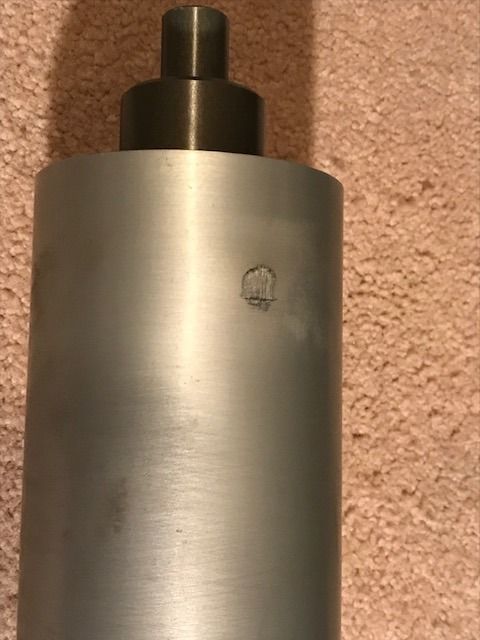
After I yanked and twisted it half way out, I resorted to a long piece of 2" PVC pipe and a sledge hammer. Now I have a swollen knuckle and a brand new GEN 2 casing I will never use again.
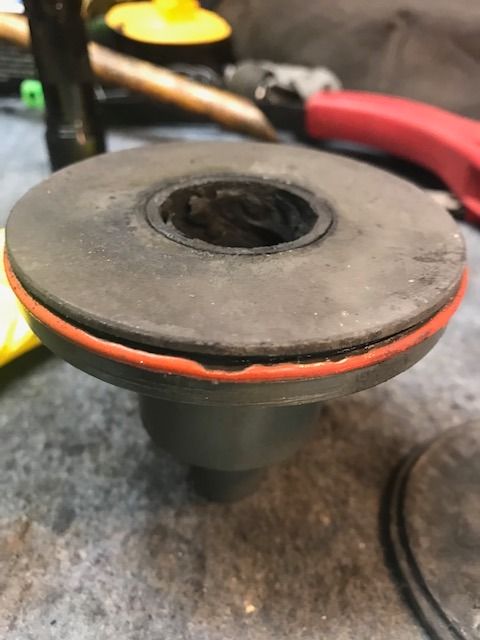
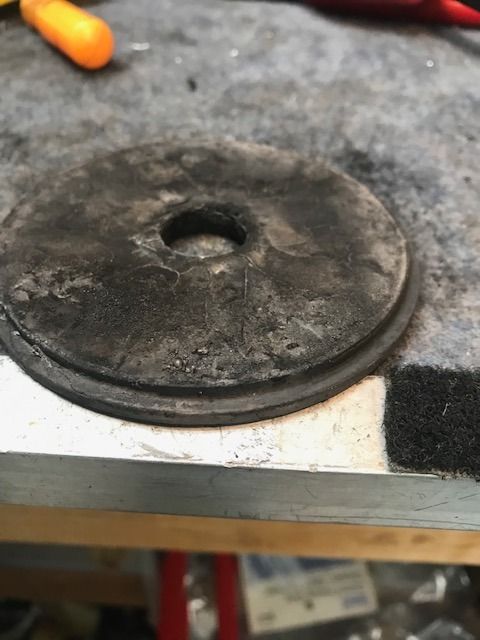
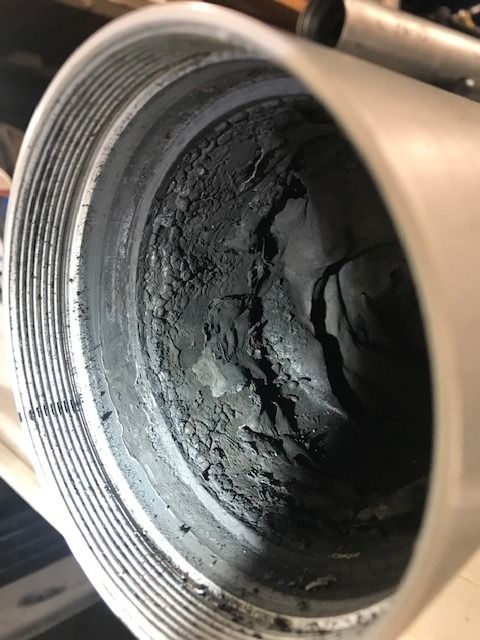
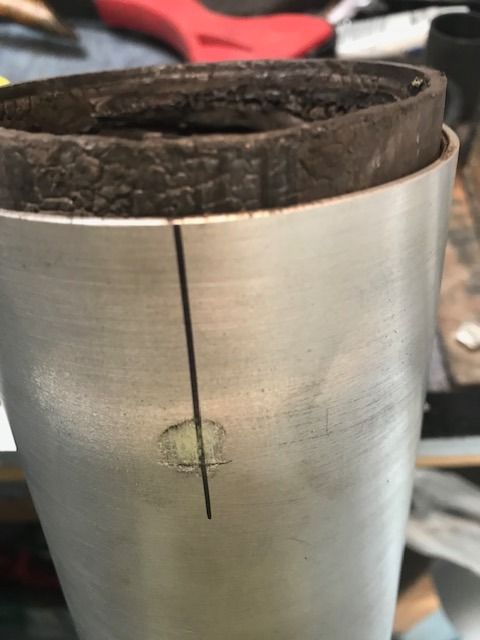
I filed a MESS report and sent an email to CTI, but their contact info must be dated, because the email bounced and when I tried the phone # on their webpage I talked to some retired guy living in Quebec that had never heard of CTI.
I wish CTI would implement the use of the forward seal disk like AT has. I use the AT disk with CTI 75 and 98 loads, as it seals better than the provided CTI fiber washer. I too have suffered the blistered case syndrome in the past (with a 75 CTI load). I'm sure they'll make good on replacement....
The liner looks OK in this shot, I
You use the AT seal disks instead of the black fiber washer in your CTI cases? That’s interesting and seems like it could be a good idea.
Wondering if it was liner failure for some reason, or gas escape past the bonded plastic disk.
Which glue did y'all use when bonding the grains to the liner?
Wondering if it was liner failure for some reason, or gas escape past the bonded plastic disk.
May warrant some extra epoxy/grease application at the joint similar to the forward closure treatment for long Pro54s JimJarvis and others recommend (I use it too just in case)
We used the supplied glue, which I think is R45 and a curative with plenty of work time.



 Did a coupler repair on a Formula 54 that had a forward blowout with an H250 Mohave Green motor. The motor casing is above. The Kevlar cord was opposite the blowout and was in good shape. I knew I was in trouble when I saw two green flames coming from the rocket, one aft out the nozzle and one out the side. Didn’t have quite enough altitude for the JL chute release to get the chute out. It did its job but too low to fill the chute. Rocket and EggFinder nosecone tracker survived and I inserted an endoscope to inspect the Kevlar cord that is epoxied into the motor mount in this small rocket. It was in good shape as the flames came out at 180 degrees. Rocket has flown several times since then nominally. I had to take a brush, soap and hose to get the detritus of combustion out of the rocket so the fiberglass coupler could be slid down the tube. I masked and did a a metallic black paint job on the coupler. Always a conversation starter at the RSO table.
Did a coupler repair on a Formula 54 that had a forward blowout with an H250 Mohave Green motor. The motor casing is above. The Kevlar cord was opposite the blowout and was in good shape. I knew I was in trouble when I saw two green flames coming from the rocket, one aft out the nozzle and one out the side. Didn’t have quite enough altitude for the JL chute release to get the chute out. It did its job but too low to fill the chute. Rocket and EggFinder nosecone tracker survived and I inserted an endoscope to inspect the Kevlar cord that is epoxied into the motor mount in this small rocket. It was in good shape as the flames came out at 180 degrees. Rocket has flown several times since then nominally. I had to take a brush, soap and hose to get the detritus of combustion out of the rocket so the fiberglass coupler could be slid down the tube. I masked and did a a metallic black paint job on the coupler. Always a conversation starter at the RSO table.I've recently had a similar issue with a CTI Pro24 6G reload which burned through the liner at the top/fwd closure (which was fitted with an O-ring). The resulting "flaming death" caused a loss of the airframe, melted recovery gear and a brand new Jolly Logic chute release device toasted and lost in a field on it's maiden flight.
I filed a MESS report. However, when I also try to report it directly to CTI on their contacts page, the email just bounces back. The motor batch was Dec 2010.
I've since re-used the fin-can and nose cone which both survived to rebuild, but I'm disappointed to now read that there are many other fellow fliers who seem to be suffering similar issues across a range of CTI ProX reloads. I'll follow the advice and start using epoxy at the fwd enclosure.
.View attachment 392831 View attachment 392832
Last two photos of the failed reload. Batch Dec 23 2010View attachment 392833 View attachment 392834
The last 3 CTI motors that I've burned, 1-29 and 2-38s, have all had near failures that looked JUST LIKE THAT. Time span on manufacture across all 3 motors is nearly 3 years. Something ain't right here.
Enter your email address to join: